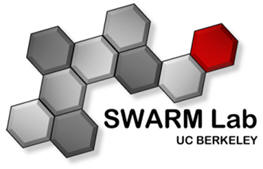Precision amplifiers dominate the power dissipation in most high-speed pipelined analog-to-digital converters (ADCs). Wepropose a digital background calibration technique as an enabling element to replace precision amplifiers by simple power-efficient open-loop stages. In the multibit first stage of a 12-bit 75-MSamples/s proof-of-concept prototype, we achieve more than 60% residue amplifier power savings over a conventional implementation. The ADC has been fabricated ina 0.35-μm double-poly quadruple-metal CMOS technology and achieves typical differential and integral nonlinearity within 0.5 LSB and 0.9 LSB, respectively. At Nyquist input frequencies, the measured signal-to-noise ratio is 67 dB and the total harmonic distortion is -74 dB. The IC consumes 290 mW at 3 V and occupies 7.9 mm2.
Quantification of biological and biomedical processes plays a crucial role in early and acute detection of disease, food safety, and monitoring the environment. Present solutions are largely based on a complex laboratory infrastructure. Point-of-care devices (POC) based on lateral flow and colorimetric readout offer much faster turnaround time and are enjoying increasing popularity. Unfortunately the range of presently available POC solutions is limited and present devices suffer from low sensitivity.
We discuss a new class of devices based on electronic detection that that overcome the shortcomings on present POC technology by offering the same ease of use, accuracy, and economy we have come to expect from consumer electronic devices. The devices duplicate the biochemistry used in laboratory tests but replace enzymatic tags with micron-scale magnetic tags attached to receptor molecules to facilitate electronic detection with integrated circuits.
We discuss a new class of devices based on electronic detection that that overcome the shortcomings on present POC technology by offering the same ease of use, accuracy, and economy we have come to expect from consumer electronic devices. The devices duplicate the biochemistry used in laboratory tests but replace enzymatic tags with micron-scale magnetic tags attached to receptor molecules to facilitate electronic detection with integrated circuits.
Resonant force sensors have long been used in precision gyroscopes and balances. This presentation describes the design of such a device for strain measurements. Focus is on the optimization of resonator Q and amplitude for maximum dynamic range and resolution. A sustaining loop permitting oscillation in atmospheric pressure and with very large motional impedance and parasitics is described. The measured resolution of the device is 33-nε in a 10-kHz bandwith with only 200-μm gauge length. Spot noise is 40-pε/rt-Hz at 100-Hz.
Inertial sensors have been used since the 1950s in aerospace and defense applications primarily for navigation. The size, power, and cost reduction enabled by micromachining and custom electronic interfaces opens many new applications in the automotive and consumer sectors. Extensively used since the 1990s as crash sensors in vehicles, accelerometers and gyroscopes are increasingly used also to detect and restore loss of steering control using individual wheel breaking. More recently consumer applications for gaming and in mobile communication devices are fueling the rapidly expanding market.
We present an unconventional approach to gyro interface electronics that combines resonant gain boosting and sub-kT/C low noise amplification to realize more than an order-of-magnitude power reduction compared to conventional solutions. The device employs positive feedback to ensure robust and stable operation to accommodate over 200 degrees phase shift from parasitic resonances and transport delay. The measured spot noise of the gyro is 14deg/h/rt-Hz in a 50Hz signal band and 1mW power dissipation.
We present an unconventional approach to gyro interface electronics that combines resonant gain boosting and sub-kT/C low noise amplification to realize more than an order-of-magnitude power reduction compared to conventional solutions. The device employs positive feedback to ensure robust and stable operation to accommodate over 200 degrees phase shift from parasitic resonances and transport delay. The measured spot noise of the gyro is 14deg/h/rt-Hz in a 50Hz signal band and 1mW power dissipation.
The simplicity and low cost of capacitive interfaces
makes them very attractive for wireless charging stations. Major
benefits include low electromagnetic radiation and the amenability
of combined power and data transfer over the same interface.
We present a capacitive power transfer circuit using series
resonance that enables efficient high frequency, moderate voltage
operation through soft-switching. An included analysis predicts
fundamental limitations on the maximum achievable efficiency
for a given amount of coupling capacitance and is used to find
the optimum circuit component values and operating point. Automatic
tuning loops ensure the circuit operates at the optimum
frequency and maximum efficiency over a wide range of coupling
capacitance and load conditions.
An example interface achieves near 80% efficiency at 3.7W
with only 63 pF of coupling capacitance. An automatic tuning
loop adjusts the frequency from 4.2MHz down to 4MHz to
allow for 25% variation in the nominal coupling capacitance.
The duty cycle is also automatically adjusted to maintain over
70% efficiency for light loads down to 0.3W.
The characteristics of deep sub-micron differ significantly from those predicted by the "square law" transistor model taught in many text books. The consequences are large discrepancies between hand calculations and simulations, sub-optimal designs e.g. consuming excessive power, and increased design time. This presentation outlines a design procedure for analog circuits that circumvents these problems and leads to optimal designs with minimum iteration.
Capacitive sensor interfaces have been demonstrated to achieve sub-pico-meter position resolution but require careful co-design of the transducer interface and readout electronics. Various approaches will be compared in terms of performance metrics including accuracy, noise, linearity and power dissipation. Circuit techniques such as chopper stabilization, box-car sampling, and electrostatic feedback are discussed in the context of practical accelerometer and gyroscope designs.



